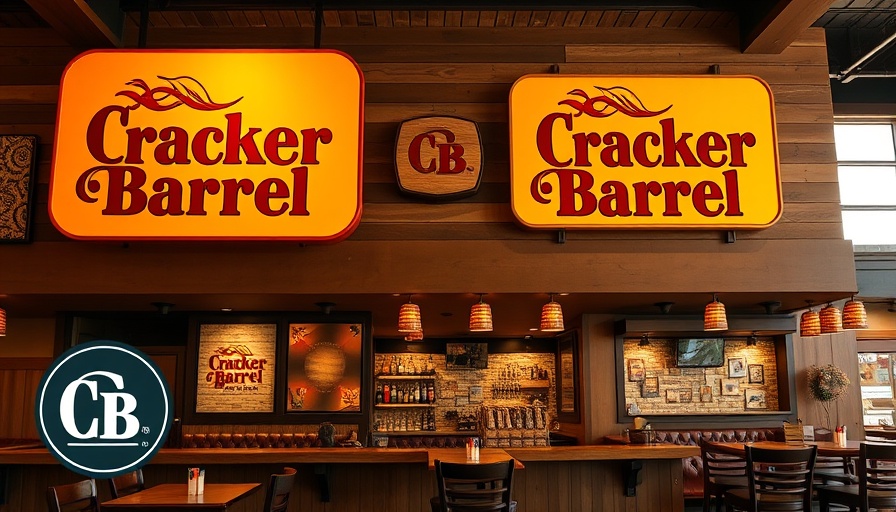
Cracker Barrel's Bold Rebrand: A Risky Move or a Smart Strategy?
Cracker Barrel is shaking things up with a fresh rebranding that’s quickly faced fierce backlash. Unveiling a new logo aimed at modernizing its image, the popular restaurant chain saw its stock tumble by 7.2% just days after the launch. Critics from all sides—political figures to everyday consumers—leapt onto social media to voice their disapproval, with many declaring that the rebrand felt detached from American traditions.
Why Nostalgia Matters in Branding
As a chain deeply rooted in comfort and community, Cracker Barrel’s rebranding decision raises a significant question: How do brands evolve without alienating their loyal customer base? This sentiment was echoed by design experts who argue that a brand's identity transcends visual aesthetics; it's tied to cultural memory. The removal of its iconic old man and barrel motif has left many loyal patrons feeling a disconnect. Kathy Green, an expert in brand strategy, notes that nostalgia plays a crucial role in retaining customers—using familiar elements can create a sense of belonging that new visuals may not capture.
The Digital Dilemma: Evolution vs. Tradition
In our fast-moving digital age, companies often feel compelled to revamp their identities to stay relevant. Cracker Barrel's new logo aims to enhance legibility across various platforms—key in an era dominated by social media. However, the challenge remains: how to modernize without stripping away the essence of what makes a brand special? Industry experts suggest that successful rebranding should be an exercise in storytelling, where companies not only evolve but also convey why their history remains essential in their new narratives.
Looking Forward: Can Cracker Barrel Repair Its Image?
Despite the current backlash, Cracker Barrel has not wavered in its commitment to the new logo. Sarah Moore, the brand's CMO, defends the rebrand as a reflection of Cracker Barrel's enduring values and the community it serves. Moving forward, it's crucial for the brand to find ways to engage with its audience, perhaps by facilitating conversations to bridge the gap between traditional values and modern interpretations.
 Add Row
Add Row  Add
Add 




Write A Comment